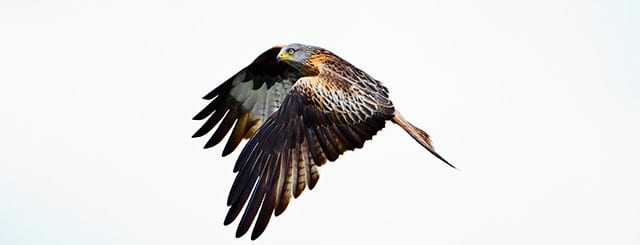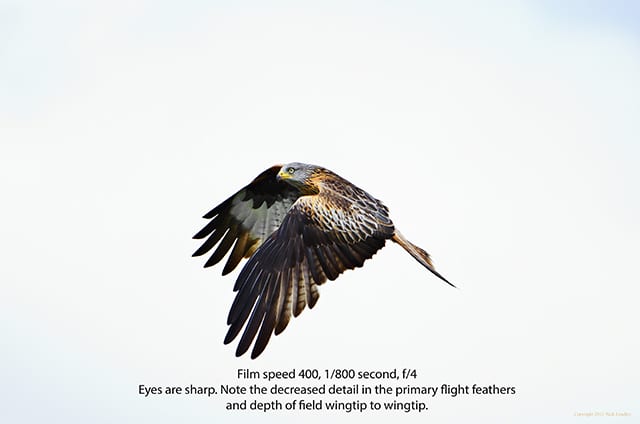
Welcome back to Through the Lens with Nick Leadley, our continuing series on wildlife photography. Read the rest of the series here, and see more of his work at Touch The Wild.
Spring is here. That fact leads me to think about one thing: bird migration and the distances birds fly during migration. This led me to ponder the techniques of capturing photographs of birds in flight.
Flight photography is one of the most challenging techniques facing bird photography enthusiasts. Location is an all-important consideration when capturing flight images. Find spots that have clean backgrounds or where the distance between your subject and the background is great enough to render the background out of focus, and there are no elements in the foreground to interfere with autofocus. Beaches and open fields are a great example.

Determining exposure for flight shots is not difficult. I tend to avoid metering modes where the camera is doing some of the thinking and use manual mode. This means you are exposing for the light falling on the bird, which is a more accurate method.
The goal in determining exposure is to render the bird’s flight feathers sharp with adequate detail from wingtip to wingtip. This requires a shutter speed of 1/2500 of a second or higher and a minimum aperture of f/8. The easiest way to get the exposure right is to start with those settings on the camera and select the appropriate film speed for that exposure. Birds smaller than terns and gulls may require a faster shutter speed.
Autofocus settings are critical to achieving successful shots of flying birds. In most cases, single point autofocus is not capable of keeping up with a moving subject. Focusing modes that allow the camera to track a moving subject are the best choice here. In Nikon cameras, this is called AF-C, in Canon cameras AI-Servo.
Equally important is a selection of focusing points to track the bird accurately. In Nikon cameras, I have the best success with Dynamic 9-point focus. In Canon cameras, this is called Expanded AF mode. In either mode, if the focus is lost by the active sensor, a nearby sensor picks up the moving subject.

Successful flight shots also require a bit of knowledge about the birds themselves. Wind direction plays a significant role as birds take off and land into the wind. As they come in to land, birds often bank into the wind, resulting in an interesting angle from wingtip to wingtip.
Shooting handheld is a more natural way of tracking moving birds than using a camera mounted on a tripod. I shoot both ways. With a tripod-mounted camera using a gimbal head from Wimberly, Really Right Stuff or Kirk Photo is helpful, mainly if using long lenses.
If you have any further questions about flight photography, please do not hesitate to contact me at nick@touchthewildphotos.com.
